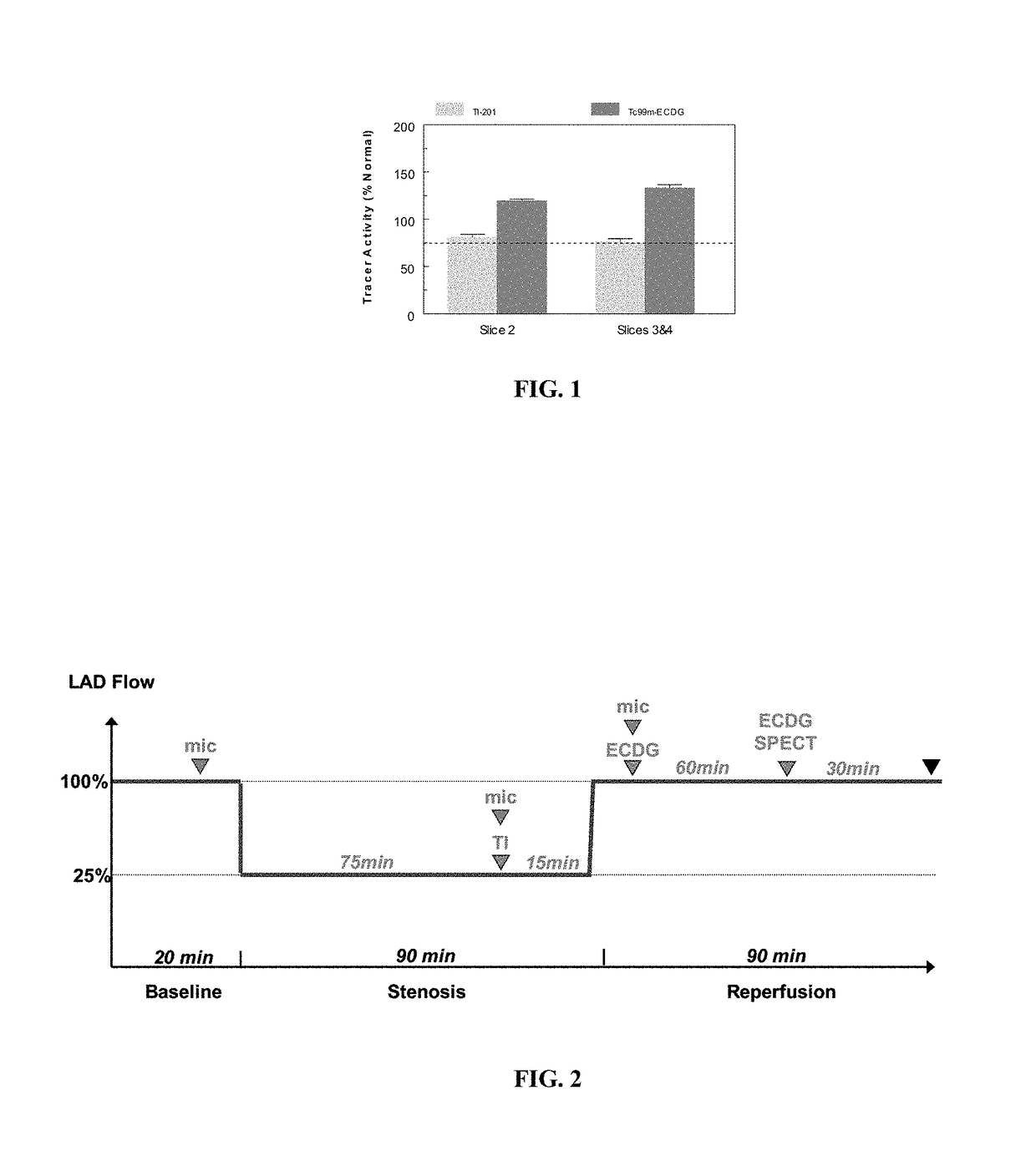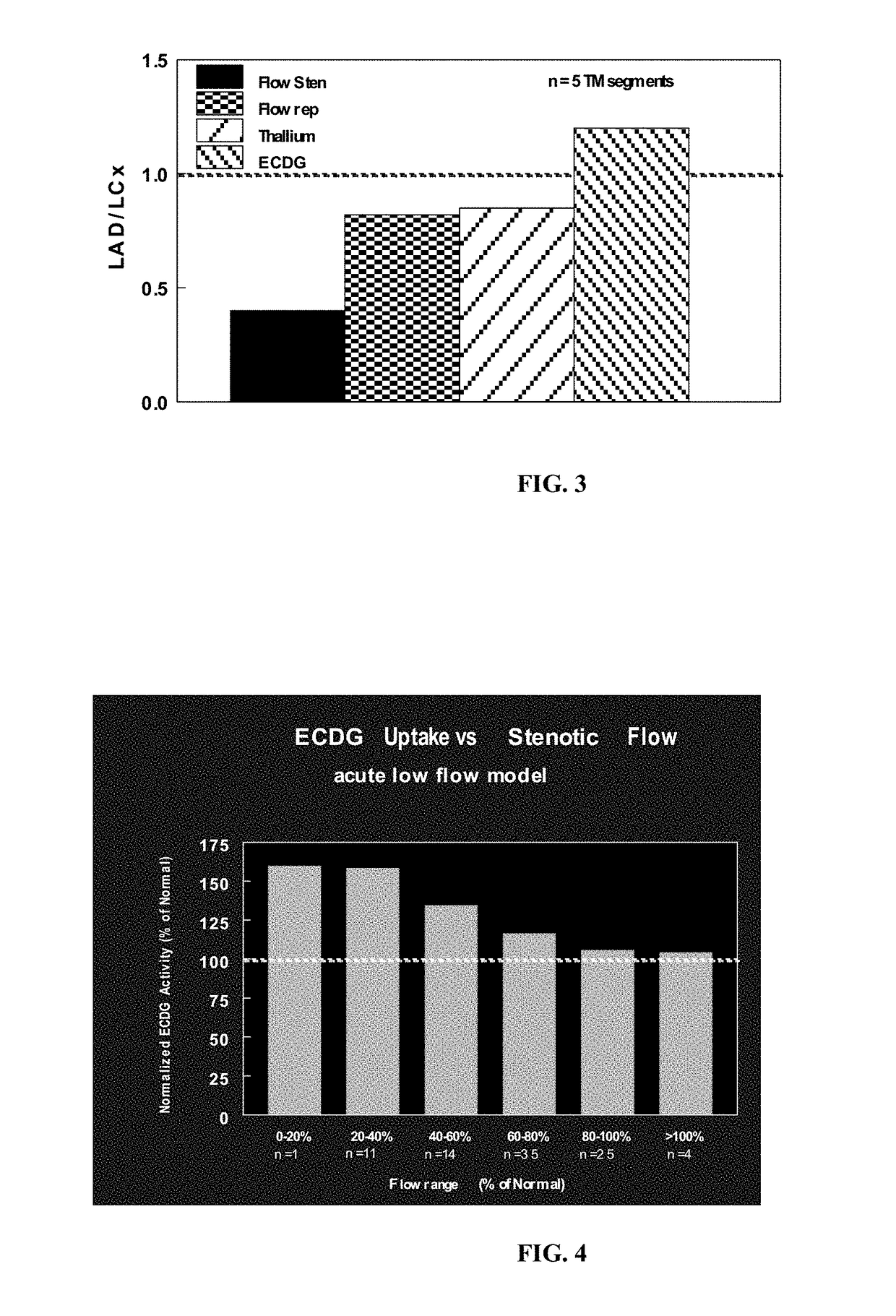Chelator-targeting ligand conjugates for cardiovascular imaging
a chelator-targeting and conjugate technology, applied in the field of cardiovascular imaging, can solve the problems of limited clinical usefulness of absolute thallium clearance measurement for identifying disease in individual coronary arteries, permanent disability in the workforce, limitations of thallium scanning, etc., to improve patient convenience, improve sensitivity and specificity, and reduce cost
- Summary
- Abstract
- Description
- Claims
- Application Information
AI Technical Summary
Benefits of technology
Problems solved by technology
Method used
Image
Examples
example 1
Use of Tc-99m-Labeled Glucosamine Analog for the Noninvasive Assessment of Myocardial Injury Following Acute Myocardial Infarction
[0187]The purpose of this study was to evaluate 99mTc-ethylenedicysteine (EC) glucosamine in cardiovascular models of disease, particularly in the setting of post infarction left ventricular remodeling where the myocardial tissue is undergoing marked changes in associate with the reparative processing following a severe injury.
Results
[0188]Heart Failure Resulting from Rapid Right Atrial Pacing.
[0189]In two dogs with right atrial pacing at 180 beats per minute (bpm) for 5 weeks, there was significant deterioration of cardiac ejection fraction at the 5 week timepoint with ejection fraction reduced to less than 25% in both cases. Magnetic resonance (MR) imaging at 5 weeks showed concentric dilatation of the left ventricular (LV) chamber. The dogs underwent 99mTc-EC-glucosamine SPECT using a LEHR collimator, 360 degree rotation, 64 stops, at 30 seconds / stop. ...
PUM
| Property | Measurement | Unit |
|---|---|---|
| gamma energy | aaaaa | aaaaa |
| angle | aaaaa | aaaaa |
| period of time | aaaaa | aaaaa |
Abstract
Description
Claims
Application Information
 Login to View More
Login to View More - R&D
- Intellectual Property
- Life Sciences
- Materials
- Tech Scout
- Unparalleled Data Quality
- Higher Quality Content
- 60% Fewer Hallucinations
Browse by: Latest US Patents, China's latest patents, Technical Efficacy Thesaurus, Application Domain, Technology Topic, Popular Technical Reports.
© 2025 PatSnap. All rights reserved.Legal|Privacy policy|Modern Slavery Act Transparency Statement|Sitemap|About US| Contact US: help@patsnap.com



